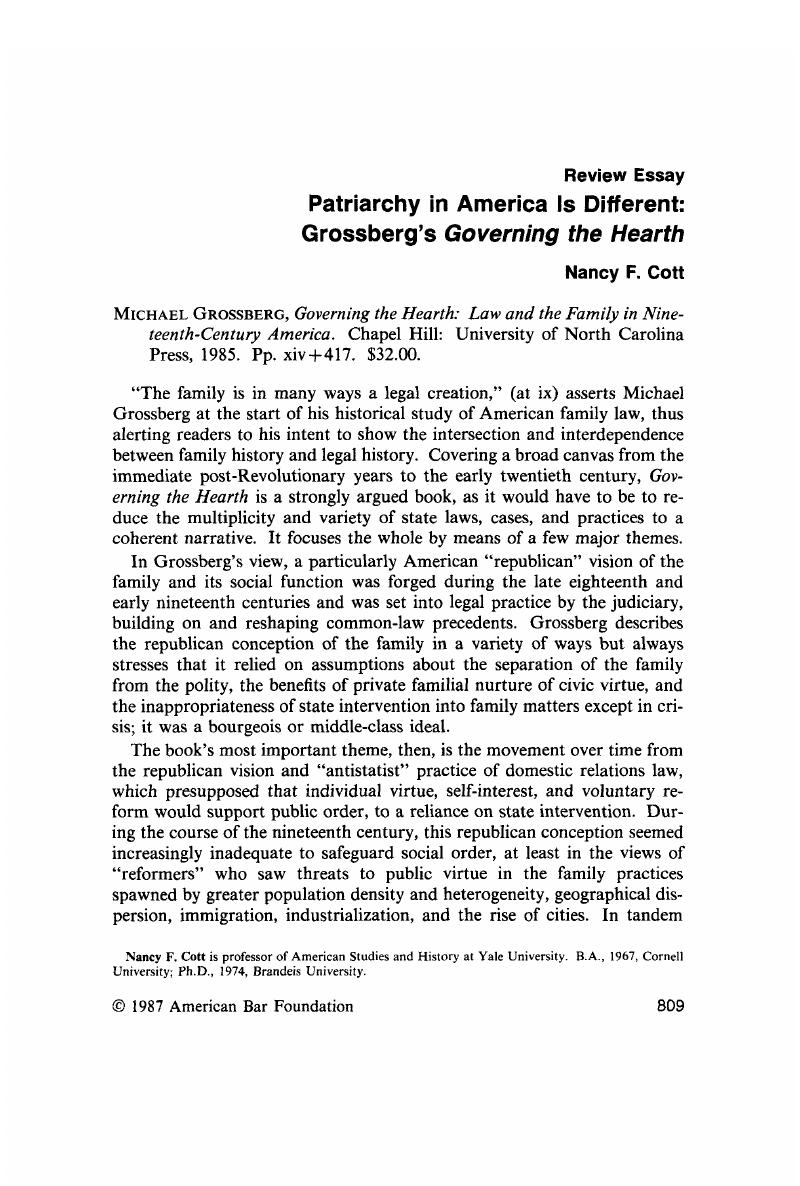No CrossRef data available.
Published online by Cambridge University Press: 20 November 2018

1 On women and eighteenth-century natural rights philosophy, see Linda K. Kerber, Women of the Republic: Intellect and Ideology in Revolutionary America (Chapel Hill, N.C.: University of North Carolina Press, 1980), and Ellen DuBois, Feminism and Suffrage (Ithaca, N.Y.: Cornell University Press, 1978), esp. at 42–46; on patriarchalism and the liberal tradition, cf. Jean Bethke Elshtain, Private Man, Public Woman (Princeton, N.J.: Princeton University Press, 1980), at 100–147; on the concept of “independence” in nineteenth-century “free labor” ideology, see Eric Foner, Free Soil, Free Labor, Free Men (New York: Oxford, 1970).Google Scholar
2 Mark Tushnet, The Republican Synthesis and Judicial Biography, 1985 A.B.F. Res. J. 911; important benchmarks in the recent generation of literature are Gordon Wood, The Creation of the American Republic, 1776–1787 (Chapel Hill, N.C.: University of North Carolina Press, 1969), and J. G. A. Pocock, The Machiavellian Moment (Princeton, N.J.: Princeton University Press, 1975).Google Scholar
3 For current developments of the concept of republicanism toward economic categories, see Steven Hahn, The Roots of Southern Populism: Yeoman Farmers and the Transformation of the Georgia Upcountry (New York: Oxford, 1983), and Sean Wilentz, Chants Democratic: New York City and the Rise of the American Working Class, 1788–1850 (New York: Oxford, 1984).Google Scholar
4 Especially interesting are Norma Basch, In the Eyes of the Law: Women, Marriage and Property in Nineteenth-Century New York (Ithaca, N.Y.: Cornell University Press, 1982); Richard H. Chused, Married Women's Property Law, 1800–1850, 71 Georgetown Law Journal 1358–1425 (June 1983); Suzanne Lebsock, The Free Women of Petersburg: Status and Culture in a Southern Town, 1784–1860 (New York: W.W. Norton, 1985); Marylynn Salmon, Women and the Law of Property in Early America (Chapel Hill, N.C.: University of North Carolina Press, 1986); Amy Stanley, Status or Free Contract: Marriage in the Age of Reconstruction, paper prepared for delivery at the 1985 meeting of the American Historical Association, N.Y., December 1985; Reva Siegel, Of Status and Contract, Marriage and Market: Nineteenth-Century Reform of Coverture; Judicial Construction of the Earnings Statutes, unpubl. paper, Center for Studies in Law, Economics and Public Policy, August 1986.Google Scholar
5 See, for example, James C. Mohr, Abortion in America (New York: Oxford, 1978): Kristin Luker, Abortion and the Politics of Motherhood (Berkeley, Calif.: University of California Press, 1984). 11–65; Rosalind Petchesky, Abortion and Woman's Choice (New York: 1984); Carroll Smith-Rosenberg, The Abortion Movement and the AMA. 1850–1880 in her Disorderly Conduct (New York: Knopf, 1985), 217–244.Google Scholar
6 Christine Stansell, City of Women: Sex and Class in New York, 1789–1860 (New York: Knopf, 1986), 214–216; cf. Linda Gordon, Single Mothers and Child Neglect, 1880–1920, 37 American Quarterly 173–192 (Summer 1985).Google Scholar